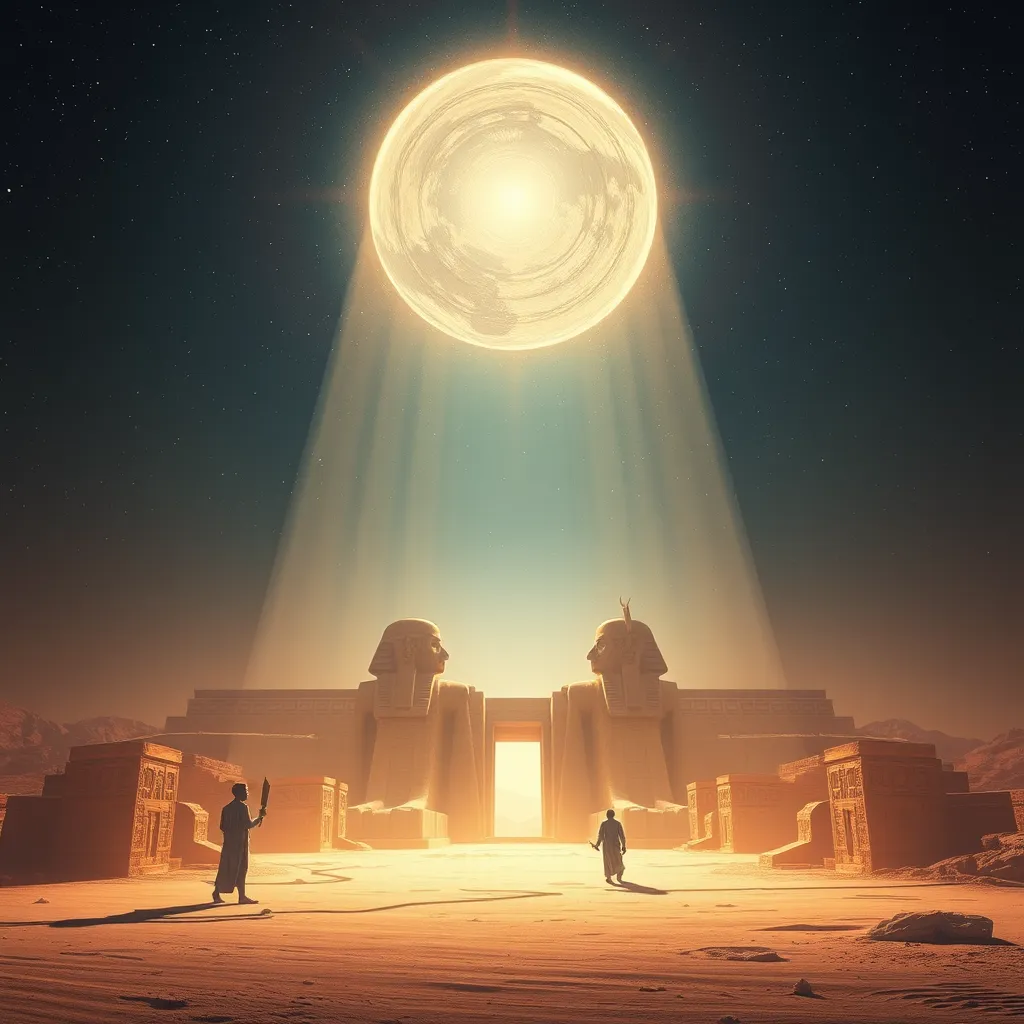The Duat: Beyond the Veil of Reality
I. Introduction to the Duat
The Duat, often referred to as the realm of the dead in ancient Egyptian mythology, represents a complex and rich tapestry of beliefs surrounding the afterlife. It is a mystical place that embodies the journey of the soul after death, serving as both a landscape and a metaphor for the challenges faced in the transition from life to the afterlife. The Duat is significant not only in religious practice but also in the cultural identity of ancient Egypt, shaping their understanding of existence and the beyond.
II. Historical Context of the Duat
The concept of the Duat has its origins in the early religious beliefs of ancient Egypt, evolving over millennia. In the Old Kingdom, the Duat was primarily viewed as a shadowy, subterranean realm where souls resided after death. As Egyptian beliefs developed through the Middle Kingdom and into the New Kingdom, the Duat took on more complex forms and meanings, integrating various myths and deities into its narrative.
- Old Kingdom: The Duat was primarily seen as a dark, mysterious place where the dead awaited judgment.
- Middle Kingdom: The Duat began to represent a more structured realm, with specific paths and trials for the deceased.
- New Kingdom: The Duat became richly populated with deities, myths, and more elaborate descriptions of the afterlife journey.
III. The Geography of the Duat
The geography of the Duat is both intricate and symbolic, consisting of various realms that reflect the journey of the soul. It is often depicted as a vast landscape featuring rivers, deserts, and fields of reeds, embodying both the struggles and the eventual peace of the afterlife.
- Waterways: The Nile and other rivers symbolize the transition between life and death.
- Fields of Iaru: These lush fields represent paradise, where the souls of the righteous reside.
- Deserts: Harsh landscapes that souls must navigate, symbolizing trials and tribulations.
Each of these geographical elements serves as a metaphor for the journey between life and death, reflecting the duality of existence and the transformative experience of the soul.
IV. Deities and Entities of the Duat
The Duat is populated by numerous deities, each playing a critical role in the afterlife journey. These gods and goddesses are responsible for guiding, judging, and assisting souls as they navigate the challenges of the Duat.
- Osiris: The god of the afterlife and resurrection, he presides over the judgment of the dead.
- Anubis: The jackal-headed god associated with mummification and the protection of graves, he guides souls through the Duat.
- Ma’at: The goddess of truth and justice, she weighs the heart of the deceased against a feather in the Judgment of the Dead.
These deities embody various aspects of the afterlife journey, providing comfort and guidance to the souls traversing the Duat.
V. The Journey Through the Duat
Upon death, the soul embarks on a perilous journey through the Duat, facing numerous trials before reaching the final judgment. This journey is meticulously described in various ancient texts, such as the “Book of the Dead.”
- Crossing the Waters: Souls must navigate treacherous waters, often guarded by serpents and other creatures.
- Facing Demons: Various obstacles and monsters challenge the souls, testing their worthiness.
- Judgment of the Dead: The climax of the journey occurs when the heart of the deceased is weighed against the feather of Ma’at. If the heart is lighter, the soul is deemed worthy; if heavier, it faces obliteration.
This journey emphasizes the moral and ethical dimensions of ancient Egyptian beliefs, underscoring the importance of living a just and virtuous life.
VI. Symbolism and Iconography of the Duat
The Duat is rich in symbolism, often depicted in ancient art and texts. The imagery associated with the Duat serves to convey deeper meanings about life, death, and the afterlife.
- The Ankh: Symbolizing life, it often appears in the hands of deities within the Duat.
- The Feather of Ma’at: Represents truth and justice, central to the judgment process.
- Serpents and Monsters: Symbolize the fears and challenges faced in the afterlife, representing chaos and disorder.
These symbols are essential for understanding the beliefs surrounding the afterlife and the moral framework of ancient Egyptian civilization.
VII. The Duat in Modern Spirituality and Culture
The influence of the Duat extends beyond ancient Egypt, resonating in contemporary spiritual practices and popular culture. Many modern spiritual beliefs draw upon the concepts of the Duat, exploring themes of life, death, and rebirth.
- Spiritual Practices: Some modern spiritual movements incorporate Egyptian mythology, using the Duat as a metaphor for personal transformation.
- Literature and Film: The Duat has inspired numerous works, from novels to movies, often depicting the journey of the soul and the moral dilemmas faced along the way.
- Artistic Representations: Contemporary artists continue to explore themes of the Duat, using symbolism from ancient Egypt to comment on modern existential issues.
VIII. Conclusion: The Lasting Legacy of the Duat
The Duat remains a vital aspect of ancient Egyptian civilization, reflecting their beliefs about life, death, and the afterlife. Its rich symbolism and complex geography offer insights into the values and ethics of a society that placed immense importance on the journey of the soul.
In modern discussions of life and death, the Duat serves as a powerful reminder of the enduring questions humanity faces regarding existence and what lies beyond. Its legacy continues to inspire and provoke thought, illustrating the timeless nature of these fundamental human concerns.




